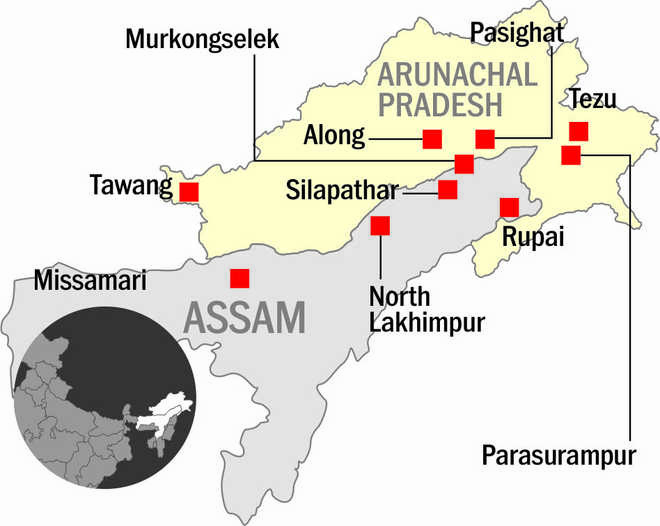
Ajay Banerjee
Tribune News Service
New Delhi, June 17
An ambitious plan to start work on militarily crucial strategic railway lines in the upper reaches of Himalayas now faces funding issues. It needs a whopping Rs 2,00,000 crore — that is almost $ 32 billion – says an assessment made by the Ministry of Defence and presented for Cabinet approval.
Sources told The Tribune that the Cabinet meeting headed by Prime Minister Narendra Modi was presented with suggestions on alternative methods for funding, including some form of private participation and equity participation from states that would benefit from enhanced tourism in these remote Himalayan regions.
 Money will be an issue but it should be sorted, said the source while explaining the quantum. The estimates will rise as boring tunnels in the Himalayas has never been easy and geological formations can prove to be tricky as it has happened in the case of the Jammu-Srinagar railway line.
Money will be an issue but it should be sorted, said the source while explaining the quantum. The estimates will rise as boring tunnels in the Himalayas has never been easy and geological formations can prove to be tricky as it has happened in the case of the Jammu-Srinagar railway line.
The existing estimate is just 20 per cent less than this fiscal’s Defence budget of Rs 2,46,727 crore that is 12 per cent of the total government expenditure.
The railway lines will need funding over the next eight to 10 years which is expected to be the gestation period of the project.
This will be the first foray of India in the upper Himalayas to build strategic railway lines. This will enable rapid deployment of troops, especially the newly created Mountain Strike Corps mandated to face China. The most important railway lines will connect Leh in Jammu and Kashmir and Tawang in Arunachal Pradesh with the mainland India. Both these are at the Line of Actual control (LAC), the de facto border with China.
The other two routes will connect one of the remotest parts of Arunachal Pradesh and facilitate easier military movement between other northeastern states and Arunachal Pradesh.
The Tawang line is most significant, considering the strategic importance of the area which is also a major Indian military base. At present, there is no crossing over the Brahmaputra from Nagaland, Manipur and Mizoram forcing the troop movement by a circuitous road route.
For north India, the rail link to Leh will be crucial. The pre-feasibility report pegs the entire 498-km all-weather broad gauge Bilaspur-Manali-Leh railway line to be the costliest of the four lines.
A British era 181-km narrow gauge line exists between Pathankot in Punjab and Joginder Nagar in Himachal Pradesh. It can be converted into broad gauge. The conversion is expected to cost Rs 3,300 crore.
The rail line to Leh is expected to pass through Upshi in Ladakh providing further bifurcation to important conflict points at Demchok and Chumar in southeastern Ladakh.



























